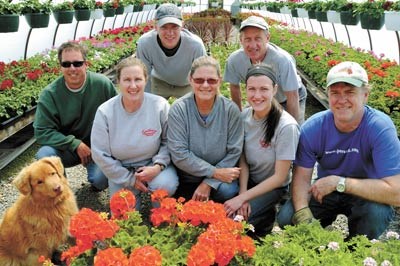Whether you are planting flowers that bloom brightly for only one season (annuals), or you are a gardener who is interested in plants that return every year (perennials), or you want to grow your own vegetables, you can get strong and healthy plants without using pesticides. Remember, your garden is a natural system, so not everything will always look perfect.
Here are some handy tips to grow a green garden.
- Mulching: good gardening practices result in strong, healthy plants. Add mulch to all your garden beds, around plants, and between vegetable rows, leaving a small one-inch moat all around the stem. Mulches, such as compost, bark, leaves and wood chips, keep weed seeds from getting light, make any weeds that land on top easier to pull and keep the earth moist. Wood and compost mulches slowly break down and feed the soil.
- Manual controls: a simple, low-tech, no-fuss way of managing pests is hand-picking or putting barriers around plants. The best way to keep pests under control is to get at them early, before they have had time to multiply, so check your plants often.
- Hand-picking: when you see a pest, pluck it off and squish it. Stop them before they can get started.
- Copper barriers: copper strips in your beds deter slugs and snails, and are available at nurseries and garden centres.
- Cutworm collars: make small two-inch collars from toilet paper or paper towel rolls. Press them into the soil so one inch is below ground to keep cutworms from attacking new seedlings or young plants in your vegetable garden.
- Diatomaceous earth: mineral dust composed of fossilized shells with razor-sharp edges pierce the skin of caterpillars, slugs and snails. Use diatomaceous earth to control these pests and also as a repellent on the soil around plants or around the outside of beds.
- Water spraying: a strong blast of water from the hose can be enough to knock aphids and spider mites from a plant.
- Cleaning up: Practice good garden hygiene. Pests thrive on and under old decaying material so pluck weeds and clear dead or diseased material away. Keep garden tools clean and sharp. When pruning or dividing plants, a clean cut is healthier for a plant than a rip or tear, where pests and disease can start. Make sure plants aren’t water-stressed or waterlogged.
- Selecting the right plants: Know your climate zone and choose plants that suit the conditions of your garden and the soil. You may have different microclimate growing conditions in one garden e.g. hot, dry, sandy, clay-based, part-sun, shady, moist, well-drained. Space plants apart so air can circulate around them, and choose resistant varieties.
Consider varieties of native plants that have already developed their resistance to many pests.
- Encourage natural predators: Nature has a way of working in our favour when we give it a chance. Many perennial plants attract bees and butterflies to pollinate your garden and make a healthy ecosystem. Encourage natural predators, like bats, toads, and birds, by building bird feeders, bat-houses and installing bird baths.
- Vegetable gardens: Don’t replant the same variety of vegetable in the same place two years in a row. There are many gardening books and websites that provide advice on plant combinations that repel pests; for example, planting marigolds around tomatoes. Space plants apart to make sure they have lots of air circulation and water in the early morning before the heat of the day.
n Amend the soil: Healthy plants need healthy soil. Be sure to add compost to your garden every fall and turn it into the beds in the spring. Get your soil checked at a nursery or garden centre to see what it needs to be well-balanced.
Source: www.ene.gov.on.ca
Join Sudbury.com+
- Messages
- Post a Listing
- Your Listings
- Your Profile
- Your Subscriptions
- Your Likes
- Your Business
- Support Local News
- Payment History
Sudbury.com+ members
Already a +member?
Not a +member?
Sign up for a Sudbury.com+ account for instant access to upcoming contests, local offers, auctions and so much more.
